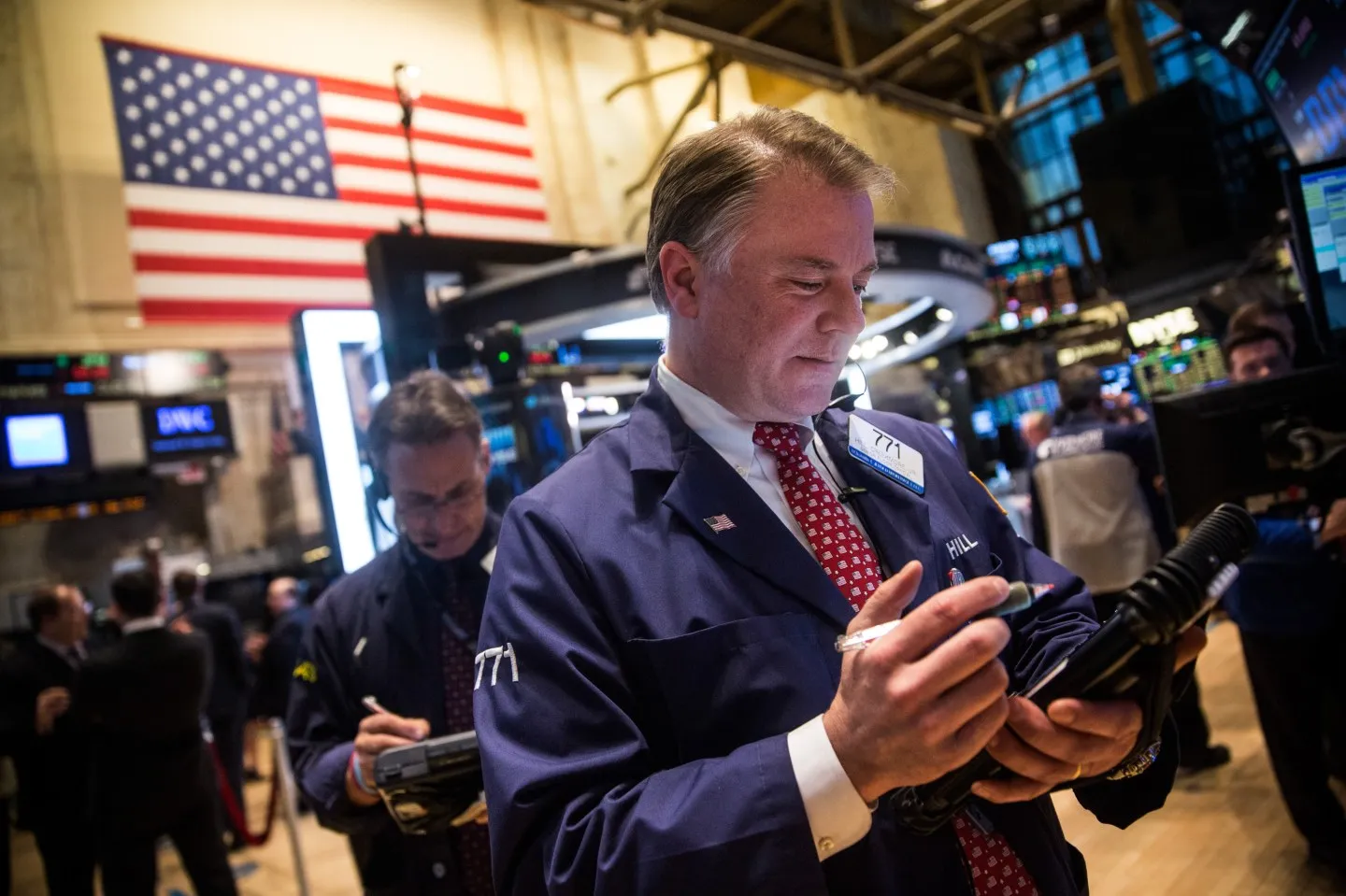Investors are gearing up once again for significant earnings-day market swings, paying a premium to speculate in a market that has lost some momentum after touching record highs.
Options tied to members of the S&P 500 Index suggest an average post-earnings move of 4.7%, according to Bloomberg data — nearly matching July’s levels, when expectations for volatility were the highest since 2022, based on JPMorgan Chase & Co.’s earnings kickoff.
The recent rise in options pricing highlights the growing tension among investors navigating a market that has mostly drifted upward punctuated by sharp drops like Friday’s 2.7% slide following President Donald Trump’s threat of steeper tariffs on Chinese goods.
The selloff served as a reminder of persistent concerns around a potential U.S. government shutdown, the economic impact of Trump’s trade policies, and growing unease about a possible bubble in artificial intelligence stocks.
“There’s a lot of volatility being priced into individual stocks,” said Mandy Xu, head of derivatives market intelligence at Cboe Global Markets Inc. “The rally has been led largely by AI and high-growth tech names, where questions are mounting about valuations and future earnings potential. This earnings season will be critical in determining whether that narrative continues to drive the market.”
Analysts at UBS Group AG noted that actual post-earnings stock movements peaked last quarter in the U.S. and have been trending higher since 2021 a pattern also evident in Europe. Meanwhile, Citigroup Inc. strategists pointed to historically low correlations between individual stocks, with both realized and implied volatilities sitting near decade-long lows.
“The looming government shutdown has created a macro catalyst vacuum,” wrote Vishal Vivek, an equity and derivatives strategist at Citigroup. “Positioning has been stretched, especially in single-stock options. All of this sets the stage for an eventful late October and early November,” he said, referencing upcoming mega-cap earnings reports, a major AI developer conference, and key economic data releases.
According to Citigroup, investors continue to expect company-specific developments to drive near-term volatility. But unlike the previous quarter, option prices have already inched higher in anticipation of bigger post-earnings swings.
Market watchers have also observed that single-stock skew the difference in implied volatility between calls and puts remains flatter than for index options, suggesting traders are more inclined to chase momentum in individual companies, particularly those tied to AI.
One factor keeping index-level volatility in check has been low correlation among stocks. While individual names have seen sharp moves, their differing directions have helped balance out index-level fluctuations. However, with Trump’s latest tariff threat shaking markets, correlations could begin to rise again as macro risks resurface.
This earnings season, discretionary, technology, and health-care sectors are expected to deliver some of the largest stock moves. Data compiled by Bloomberg show that implied volatility for consumer discretionary companies is at its highest level heading into earnings season since 2020. For materials, it’s the strongest reading in three years.
Options traders have been bidding up implied volatility across S&P 500 components, reflecting ongoing speculation surrounding the so-called “Magnificent Seven” and the AI boom fueling Big Tech’s dominance. According to JPMorgan, some investors are likely building “dispersion baskets” portfolios designed to profit from differences between individual stock moves and the overall index anticipating bargains after earnings, when implied volatility typically collapses. That effect was particularly strong following last quarter’s earnings cycle.
Alex Kosoglyadov, managing director for global equity derivatives at Nomura Holdings Inc., said the sharp moves seen in major companies like Oracle Corp. and Advanced Micro Devices Inc. have prompted a broad repricing of single-stock options.
“We’ve seen some really dramatic swings in large-cap names,” Kosoglyadov said. “It’s a reminder of just how powerful this market can be. No one wants to be caught short on volatility a single earnings surprise can trigger massive stock reactions.”
The renewed appetite for options underscores the high-stakes environment investors face heading into the heart of earnings season. With macro catalysts such as trade policy uncertainty and fiscal risks adding to the mix, traders are bracing for heightened turbulence particularly among the tech and AI heavyweights that have led much of the market’s recent gains.
In short, while index volatility remains relatively contained, investors are betting big that individual company results could deliver some outsized fireworks in the weeks ahead.

